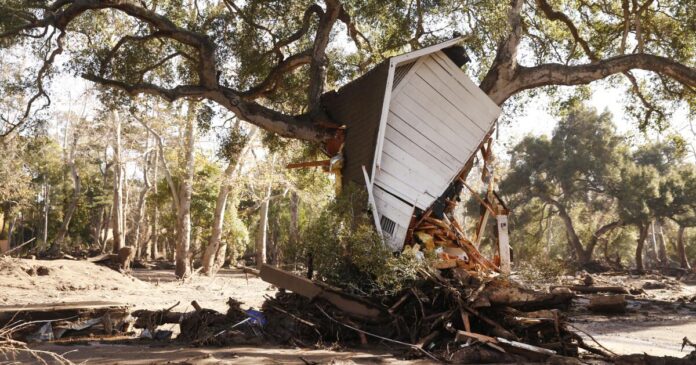"California on High Alert: Lessons from Texas’ Deadly Flash Floods Highlight Growing Risks of Extreme Weather"
Flash Floods in Texas Highlight Risks for California: A Call for Preparedness
The recent flash floods along Texas’ Guadalupe River have underscored the devastating impact such disasters can have, with over 100 lives lost, including children and counselors at a summer camp. This tragic event serves as a stark reminder of the potential dangers that California could face when extreme weather strikes, particularly in low-lying areas along rivers and creeks.
The Texas Tragedy
In July 2025, Texas experienced what officials termed a “100-year flood,” a catastrophic event that swept through communities, leaving many missing and presumed dead. The floods were exacerbated by intense thunderstorms that overwhelmed the region’s drainage systems. Brett Sanders, a professor at UC Irvine specializing in flooding, noted that many of the cabins at the summer camp were situated within federally designated floodways, areas known for their swift-moving waters. “There were people in harm’s way that didn’t know they were in harm’s way,” Sanders remarked, emphasizing the need for better risk communication and awareness.
California’s Vulnerability
California’s history is marked by similar flooding disasters, including the catastrophic floods of 1861-62 that submerged Sacramento and the infamous Los Angeles flood of 1934. More recently, a series of extreme winter storms in early 2023 resulted in approximately two dozen fatalities statewide, with victims swept away by floodwaters or caught in rockslides and car accidents.
Brett Sanders highlighted that California shares many of the same geographical vulnerabilities as Texas, including hilly topography and streams that can rapidly swell during heavy rains. “We have a lot of the same possibility of flash flooding,” he stated, warning that the risks are particularly pronounced in areas with steep terrain.
The Science Behind the Storms
Daniel Swain, a climate scientist with UC Agriculture and Natural Resources, explained that while the types of storms causing flooding in Texas differ from those typically seen in California, the potential for catastrophic flooding remains. “The level of flooding and the suddenness and catastrophic impacts of it could very well be replicated in California,” he noted.
California often experiences atmospheric rivers—massive storm systems that can carry significant amounts of water vapor from the Pacific Ocean. These storms can lead to widespread flooding across multiple watersheds, making them particularly concerning for emergency management.
Historical Context and Future Risks
The state’s history of flooding is a crucial factor in understanding current risks. The 2018 debris flows in Montecito, triggered by intense rains following the Thomas Fire, serve as a recent example of how localized storms can lead to devastating consequences. Swain pointed out that while the intensity of rainfall in California may not always match that of Texas, the potential for localized downpours exists, especially when thunderstorms occur within larger winter storm systems.
Scientific projections indicate that the risks of extreme floods are increasing due to climate change, as warmer air can hold more moisture, leading to heavier rainfall. A 2022 study estimated that up to 874,000 people and $108 billion in property could be affected by a 100-year flood in the Los Angeles Basin, revealing a greater risk than previously understood.
Mitigation Efforts in California
In response to these growing threats, Los Angeles County has been investing in flood protection and stormwater capture initiatives. Kerjon Lee, a spokesman for L.A. County Public Works, stated that the county is using climate projections to develop a robust flood-protection network. “We’re working to educate the public about flood risk so residents can develop emergency plans and reduce their financial risk through the purchase of flood insurance,” he added.
Despite these efforts, Sanders cautioned that many flood-prone campgrounds and homeless encampments along rivers remain vulnerable. He noted that motorists attempting to navigate flooded roadways are often at risk, as fast-moving waters can sweep vehicles away, leading to tragic outcomes.
Conclusion
The deadly flash floods in Texas serve as a crucial wake-up call for California. As climate change continues to alter weather patterns, the potential for extreme flooding events is likely to increase. Enhanced risk communication, better planning, and community education are essential to mitigate the dangers posed by such disasters. Coordination among federal, state, and local governments, along with proactive measures from property owners, will be vital in safeguarding communities against the looming threat of flash floods.
